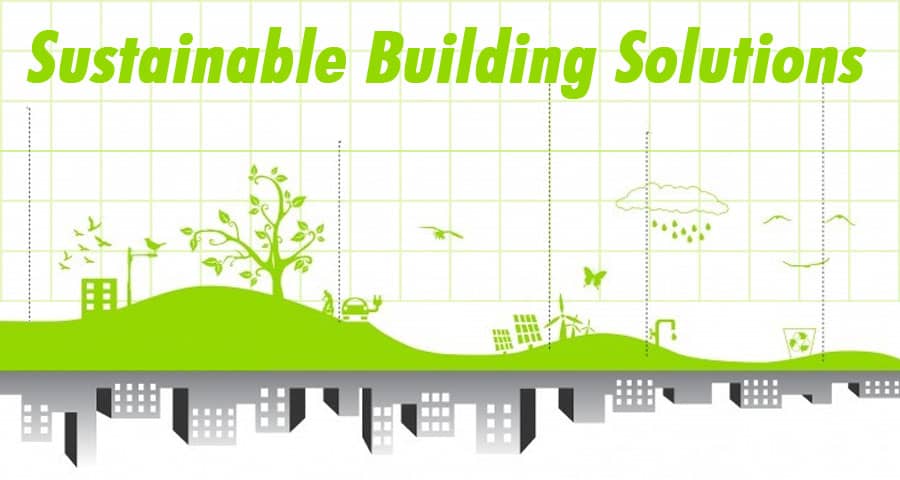Sustainable Building Solutions: Pioneering Eco-Friendly Construction

Building a Greener Future
In a world where environmental sustainability is becoming increasingly crucial, the construction industry stands at a pivotal juncture. The demand for sustainable building solutions is on the rise as individuals, businesses, and governments recognize the urgent need to minimize environmental impact and maximize energy efficiency.
Understanding Sustainable Building Solutions
What are Sustainable Building Solutions?
Sustainable building solutions encompass a diverse range of practices and technologies aimed at reducing the environmental footprint of construction projects. These solutions prioritize the efficient use of resources, including energy, water, and materials, while also promoting occupant health and well-being.
Key Principles of Sustainable Construction
- Energy Efficiency: Sustainable buildings incorporate design features and technologies that minimize energy consumption for heating, cooling, lighting, and appliances.
- Resource Conservation: From utilizing recycled materials to reducing water usage, sustainable construction emphasizes the responsible stewardship of resources.
- Indoor Air Quality: Implementing strategies to enhance indoor air quality ensures a healthier environment for building occupants, which can lead to increased productivity and well-being.
- Site Selection and Land Use: Choosing appropriate sites and optimizing land use can help minimize environmental disruption and preserve natural habitats.
- Renewable Energy Integration: Incorporating renewable energy sources such as solar, wind, or geothermal power reduces reliance on fossil fuels and lowers greenhouse gas emissions.
Benefits of Sustainable Building Solutions
- Environmental Impact Reduction: By adopting sustainable building practices, construction projects can significantly reduce their environmental footprint. From lower carbon emissions to reduced waste generation, the benefits extend beyond individual buildings to contribute to broader environmental conservation efforts.
- Economic Advantages: While there may be initial costs associated with implementing sustainable building solutions, the long-term economic benefits are substantial. Energy-efficient buildings incur lower utility bills, while innovative design strategies can enhance property values and attract environmentally conscious tenants.
- Enhanced Occupant Comfort and Health: Sustainable buildings prioritize occupant comfort and well-being through features such as ample natural lighting, improved ventilation, and the use of non-toxic building materials. These factors not only contribute to a better living or working environment but also have the potential to reduce healthcare costs associated with indoor air quality-related illnesses.
- Regulatory Compliance and Market Demand: As governments worldwide enact stricter environmental regulations and incentives for sustainable construction, adhering to these standards becomes imperative for builders and developers. Moreover, as consumers become increasingly environmentally aware, there is a growing market demand for sustainable buildings, making them more attractive investments.
Implementing Sustainable Building Solutions
- Collaborative Design Approach: Effective implementation of sustainable building solutions begins at the design stage. By adopting a collaborative approach involving architects, engineers, contractors, and other stakeholders, project teams can identify and integrate sustainable strategies that align with the project's goals and budget.
- Material Selection and Lifecycle Analysis: Careful selection of building materials is crucial to the success of any sustainable construction project. Conducting lifecycle assessments helps evaluate the environmental impact of materials from extraction and production to use and disposal, enabling informed decision-making to minimize environmental harm.
- Energy-Efficient Systems and Technologies: Incorporating energy-efficient systems and technologies is essential for reducing a building's energy consumption and carbon footprint. From high-performance insulation to advanced HVAC (heating, ventilation, and air conditioning) systems, there is a wide range of options available to improve energy efficiency and indoor comfort.
- Green Building Certifications: Obtaining green building certifications such as LEED (Leadership in Energy and Environmental Design) or BREEAM (Building Research Establishment Environmental Assessment Method) demonstrates a commitment to sustainability and provides third-party validation of a building's environmental performance.
Conclusion: Embracing a Sustainable Future
As the global population continues to grow and urbanization accelerates, the importance of sustainable building solutions cannot be overstated. By prioritizing environmental stewardship, economic viability, and occupant well-being, we can create a built environment that meets the needs of the present without compromising the ability of future generations to meet their own needs.
